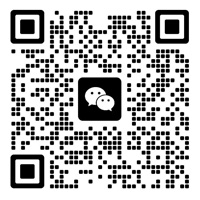Classification
PRODUCT CATEGORY
Contact
CONTACT INFO
contacts:Manager Li
Address: Luogou Village, Taiyang Street Office, Wafangdian City, Liaoning Province
The relationship between the nature of bearing load and bearing fitting method
The load borne by bearings can be divided into light load, conventional load, and heavy load according to the size of the load. According to the temporal variation of the load, it can be divided into static load, variable load, and impact load. In addition, according to the direction of the load, it can be divided into rotational load, static load, or directional load. Rotating load, static load, or directional load are not the load properties of the bearing itself, but rather the load properties observed relative to each bearing ring. When deciding on the fit between the inner and outer rings, it is necessary to first consider whether it belongs to a rotating load or a stationary load, and then determine whether to use an interference fit or a clearance fit.
Rotating load refers to a continuous change in the direction of the load relative to the collar, regardless of whether the collar itself rotates or remains stationary. Static load refers to the load direction always facing a certain part of the ring, regardless of whether the ring itself is stationary or rotating. For example, when the load direction remains unchanged for the bearing and the inner ring rotates while the outer ring is stationary, the inner ring bears the rotational load while the outer ring bears the static load. When the majority of the bearing load is unbalanced due to rotation, even if the inner ring rotates and the outer ring remains stationary, the inner ring will still bear the static load, while the outer ring will bear the rotational load.
Some operating conditions are not as simple as described above. In addition to directional loads caused by weight, there are also combined loads formed by unbalanced loads, vibration loads, power transmission loads, and so on, whose directions will change unpredictably. For this ring, either the load direction is very irregular and difficult to determine, or it is a transformation load that repeatedly occurs between rotational and static loads.
The ring that bears rotational load should generally adopt interference fit. If a clearance fit is used, the ring will slip on the mating surface of the shaft or bearing seat; When the load is large, it will damage the mating surface or cause micro motion wear. The tightness of the fit should be considered to ensure interference even under load, temperature difference between the inner ring and the shaft during operation, or temperature difference between the outer ring and the bearing seat. According to different operating conditions, the inner ring of the bearing mainly uses k5, m5, n6, etc., while the outer ring mainly uses N7, P7, etc.
As for large bearings, sometimes in order to avoid installation and disassembly difficulties, the method of fitting the clearance between the rings that bear rotational loads is also used. In this case, the shaft should be made of hard materials, with surface finishing and sufficient lubrication to prevent damage caused by slipping to the greatest extent possible.
The ring that bears static load, due to the absence of slip conditions between the bearing or bearing seat, adopts clearance fit or transitional fit. The degree should be determined based on the accuracy required by the operating conditions and the fact that the deformation of the collar will not cause excessive load distribution. Usually, the inner ring uses g6, h6, js5 (j5), etc., while the outer ring uses H7, JS7 (J7), etc. For directional loads, they cannot be uniform, but most of the inner and outer rings use a combination of interference fit.
 Chinese
Chinese Vietnamese
Vietnamese

